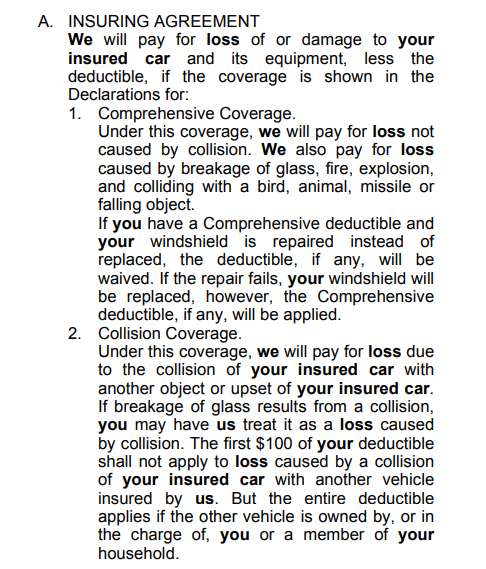The Ultimate Guide To Pacific Prime
The Ultimate Guide To Pacific Prime
Blog Article
Fascination About Pacific Prime
Table of Contents5 Easy Facts About Pacific Prime DescribedThe 45-Second Trick For Pacific PrimeGet This Report about Pacific PrimeSome Ideas on Pacific Prime You Need To KnowPacific Prime Things To Know Before You Buy

This is since the information were collected for a period of strong financial performance. Of the estimated 42 million individuals that were uninsured, all but about 420,000 (about 1 percent) were under 65 years of age, the age at which most Americans become qualified for Medicare; 32 million were adults between ages 18 and 65, around 19 percent of all grownups in this age team; and 10 million were youngsters under 18 years of age, concerning 13.9 percent of all kids (Mills, 2000).
These price quotes of the number of individuals without insurance are created from the yearly March Supplement to the Present Population Survey (CPS), conducted by the Demographics Bureau. Unless or else noted, national estimates of individuals without health insurance coverage and percentages of the population with different kinds of coverage are based upon the CPS, the most extensively made use of source of price quotes of insurance coverage and uninsurance prices.
Pacific Prime Can Be Fun For Everyone

Still, the CPS is particularly helpful because it generates yearly quotes relatively swiftly, reporting the previous year's insurance policy protection estimates each September, and due to the fact that it is the basis for a regular collection of quotes for more than two decades, enabling for evaluation of trends in coverage with time. For these factors, along with the considerable use of the CPS in various other research studies of insurance policy coverage that exist in this record, we rely upon CPS estimates, with constraints noted.

The quote of the number of uninsured individuals increases when a population's insurance coverage condition is tracked for a number of years. Over a three-year duration starting early in 1993, 72 million people, 29 percent of the united state populace, lacked insurance coverage for a minimum of one month. Within a single year (1994 ), 53 million individuals experienced at the very least a month without protection (Bennefield, 1998a)
6 out of every ten uninsured adults are themselves utilized. Functioning does boost the chance that one and one's household participants will certainly have insurance coverage, it is not a guarantee. Even members of family members with 2 permanent breadwinner have virtually a one-in-ten opportunity of being uninsured (9.1 percent without insurance rate) (Hoffman and Pohl, 2000).
The Of Pacific Prime
New immigrants represent a significant percentage of people without medical insurance. One evaluation has attributed a substantial section of the recent development in the size of the united state without insurance populace to immigrants that showed up in the nation in between 1994 and 1998 (Camarota and Edwards, 2000). Recent immigrants (those that concerned the USA within the previous four years) do have a high rate of being without insurance (46 percent), however they and their children make up just 6 percent of those without insurance country wide (Holahan et al., 2001).
The relationship between health and wellness insurance and access to care is well developed, as documented later in this phase. The partnership in between wellness insurance policy and health outcomes is neither direct nor basic, a comprehensive scientific and wellness solutions research literature links health and wellness insurance policy protection to better accessibility to care, much better quality, and enhanced personal and population health status.
Levels of evaluation for analyzing the effects of uninsurance. This discussion of medical insurance protection concentrates largely on the united state population under age 65 since essentially all Americans 65 and older have Medicare or other public insurance coverage. Additionally, it focuses especially on those with no medical insurance for any type of length of time.
Some Of Pacific Prime
The troubles faced by the underinsured remain in some areas comparable to those faced by the uninsured, although they are generally less serious. maternity insurance for expats. Uninsurance and underinsurance, nevertheless, include definitely different plan issues, and the methods for addressing them might vary. Throughout this research and the 5 reports to follow, the major emphasis gets on persons with no wellness insurance and hence no aid in paying for healthcare beyond what is readily available with charity and safety net establishments
Medical insurance is a powerful element impacting invoice of care because both clients and physicians react to the out-of-pocket cost of solutions - https://www.ted.com/profiles/46568975. Medical insurance, however, is neither needed nor enough to access to medical solutions. The independent and direct impact of wellness insurance policy coverage on access to health and More about the author wellness services is well developed.
Others will certainly get the healthcare they require also without health insurance coverage, by spending for it expense or seeking it from carriers who offer treatment cost-free or at very subsidized rates. For still others, medical insurance alone does not make sure receipt of care due to the fact that of other nonfinancial obstacles, such as a lack of healthcare suppliers in their community, minimal accessibility to transport, illiteracy, or linguistic and cultural differences.
Getting My Pacific Prime To Work
Official research study concerning without insurance populations in the United States dates to the late 1920s and very early 1930s when the Committee on the Expense of Healthcare created a collection of records concerning financing medical professional workplace sees and hospitalizations. This concern ended up being significant as the varieties of medically indigent climbed throughout the Great Depression.
Report this page